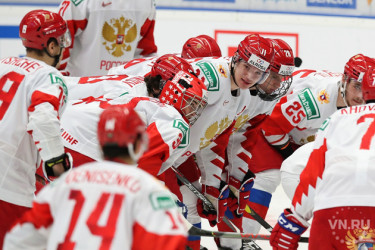⋆ Product Quality indicators Packaging Type Sunflowerseeds Kernels Moisture 10% Max. Impurities (Admixture)
pumpkin seed, sunflower seed

Bright orange pumpkin fruits, in addition to delicious pumpkin porridge and many other tasty and healthy dishes, also give us wonderful and versatile pumpkin seeds. This is not just a tasty and healthy dish, it is a real storehouse of vitamins, microelements and other useful substances, as well as healing properties that help against many diseases.
They contain elements of iron, copper, manganese, zinc and phosphorus, as well as amino acids. In smaller quantities they contain calcium, potassium, selenium, folic acid and niacin, vitamins of groups B, E, PP. Thanks to this combination of trace elements, vitamins and acids, these raw seeds are used to remove intestinal parasites from the body. Pumpkin seed is one of the few remedies that does not contain toxins and does not give side effects. As an anthelmintic, it is used in combination with honey. Indicated for use in both adults and children.
Phosphorus in combination with zinc improves brain activity, stimulates the circulatory system. Due to the high content of zinc, the seed is used to prevent prostatitis and inflammation of the prostate gland. Due to the uniqueness of its composition, it is used in diseases of the kidneys and bladder. A mixture of this seed and hemp seed, mixed in equal proportions, is used for urinary retention, the appearance of blood in the urine.
The nutritional value of pumpkin seeds is explained by their high content of fats and proteins, as well as carbohydrates and fiber. Minerals pumpkin seeds are also rich: iron, manganese, copper, zinc, phosphorus, selenium, calcium, potassium, magnesium, together with amino acids, resins, essential oils, glycosides and alkaloids, create a unique composition that can alleviate and cure many diseases. The proteins of pumpkin seeds strengthen the developing bone tissue in children.
The composition of white pumpkin seeds contains a lot of iron, which is an anti-stress fuse. In addition, the zinc contained in the seeds ensures the normal functioning of the brain, reduces mental fatigue, irritability, improves memory and normalizes sleep.
Numerous Benefits pumpkin seeds are due to the very rich composition of nutrients and minerals in this natural product. This list includes protein, amino acids, a wide range of vitamins, and minerals such as zinc, calcium, iron, phosphorus, potassium, copper, magnesium, manganese, and so on. Pumpkin seeds are one of the most beloved foods consumed in Asian countries: in particular, in ancient Chinese medicine, raw pumpkin seeds were used to get rid of depression and nervous disorders.
Seed oil is one of the richest oils in the composition of plant origin. Cooking of the countries of Central and Western Europe uses pumpkin oil in recipes for making many dishes, not sunflower or olive. This oil is a good help in the treatment of tuberculosis, diarrhea, dryness in the nasal cavity. Oil is the basis of a medicine called pumpkin.
The uniqueness of pumpkin seed is not limited to this. For kidney diseases, you can use a decoction of pumpkin seeds. In addition, you can make a compress on the kidneys: 100 gr. Crowned pumpkin and linen seeds are diluted to a porridge. Some sources indicate the use of them with angina pectoris, because the trace elements contained in them have a beneficial effect on the activity of the heart muscle, and the oils located in it have a beneficial effect on the state of the blood arteries. There is also information about the use of this useful seed in the treatment of baldness, since zinc contained in the seed has a beneficial effect on the hair follicle.
Even if nothing hurts, there are no signs of disorders, it is always useful to just eat, as they say, “a handful” of stained or dried, this is to taste, pumpkin seeds.
Sunflower (Helianthus Annuus) is an annual plant from America, which has a large inflorescence (head flower). The sunflower got its name because of its huge, fiery flower, whose shape and image are often used to image the sun. The sunflower has a rough, hairy trunk, wide, coarse, rough leaves and a round head of a flower. The head consists of 1000-2000 separate colors, united together in the color of the color.
From America, sunflower seeds were brought to Europe in the 16th century, where, along with sunflower oil, they became widespread ingredient in the process of cooking. Sunflower leaves can be used for livestock feed, and stems contain fibers that can be used in the production of paper.
What is usually called a “flower” on a mature sunflower is actually called a “head flower” (also known as a “composite flower”) with numerous flowers collected on it. The outer petal-plane contains flowers that can be yellow, red, orange or other color. The flowers inside the circular head are called the edge flower, they continue to ripen into seeds.
Flowers within the sunflower cluster are located in the form of a spiral. As a rule, each flower is focused on the next one at a “golden” angle of 137.5 °, thereby making a picture of interconnected spirals, where the number of left spirals and the number of right -wing spirals are the consistent numbers of fibonacci. As a rule, there are 34 spirals in one direction and 55 in the other. On a very large sunflower there can be 89 spirals in one direction and 144 – in the other.This is a model of the most effective arrangement of seeds in the flower head.
Sunflowers most often grow to a height of 1.5-3.5 m. In the scientific literature, it is reported that in Padua in 1567 a traditional, with one head, sunflower 12 m in length was grown. Seeds from the same batch grew by almost 8 m in another time and in another place, including in Madrid. In the 20th century, a height of more than 8 m in the Netherlands and Ontario, Canada was reached.
Sunflower seeds They are sold in the form of a snack, peeled raw or fried in a stove, with or without salt, sometimes with the addition of seasonings. The sunflower can be redesigned into sunflower oil – an alternative to arachic oil. In Germany, they are mixed with rye flour to make sonnenblumenkernbrot (literally: bread from whole sunflower seeds), which is very popular in German -speaking Europe. It is also sold as bird feed and can be used directly in cooking and salads. Indigenous Americans often used sunflower in bread, for the production of medicinal ointments, dyes and bodily colors.
Sunflower oil obtained from seeds is used for cooking, the production of margarine and biodesel, and it is cheaper than olive oil. Various varieties of sunflower differ in compositions of fatty acids, some types of highly oleic varieties contain a higher level of mono -saturated fats in their oil than even olive oil.
The rar left after the seeds is processed into oil, and is also used as a feed for livestock. Some of the recently developed varieties have heads down down. These varieties are less attractive to gardeners as decorative plants, but they are intended for farmers, since in this way they reduce bird damage and loss from some plant diseases. Latex is also produced from sunflower, they are the subject of experiments to improve suitability as alternative crops for the production of hypoallergenic rubber.
Traditionally, several groups of indigenous American inhabitants planted sunflower in the north of the region in their gardens as a “fourth sister” to better famous three sisters: corn, beans and pumpkin. The annual types of sunflower are often planted due to their allepathic properties.
Nevertheless, farmers growing commodity crops often consider sunflower, like any other undesirable plants, weeds. Especially in the Middle West of the United States, where wild (perennial) species are often found in corn and soybeans, and may have a negative impact on productivity.
Sunflowers can be used to extract toxic components from the soil, such as lead, arsenic and uranium. They were used to remove Cesia-137 and Strontia-90 from the neighboring pond after the Chernobyl disaster, and similar events were carried out after a nuclear disaster on Fukushima.
In terms of production of sunflower in the world as of 2006, Russia was occupied by Russia, Ukraine, Argentina and China were following it. In the table you can see the quantitative expression of the volumes of growing sunflower in the world.




